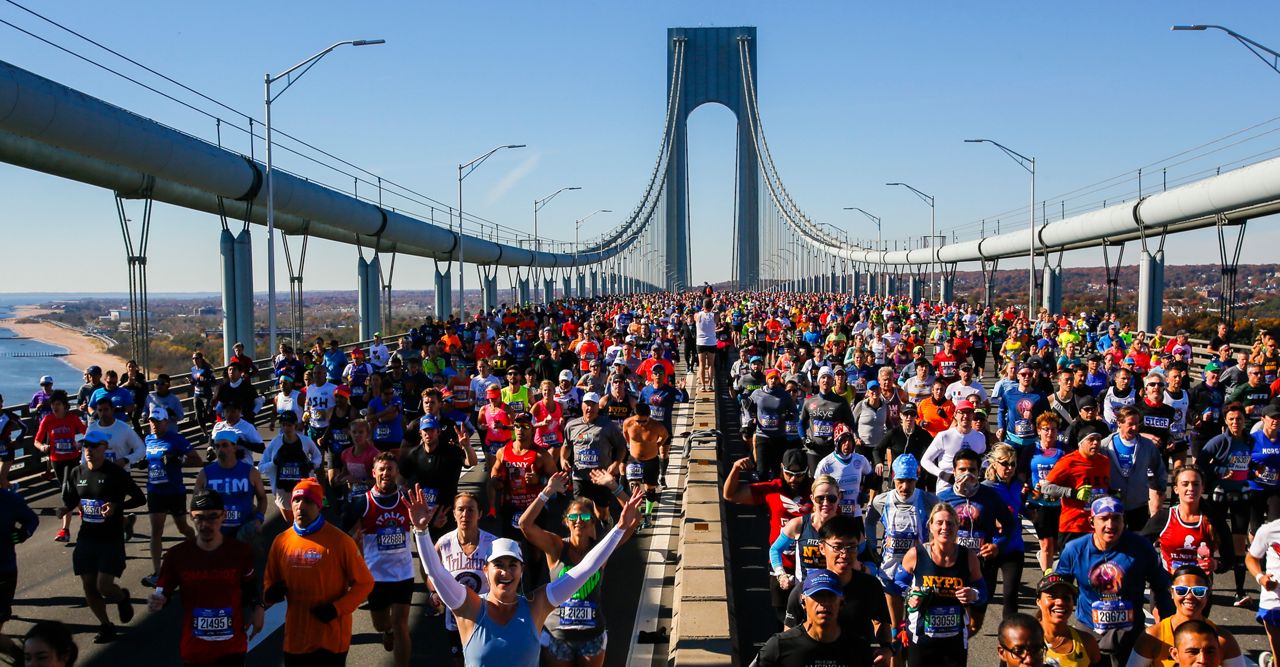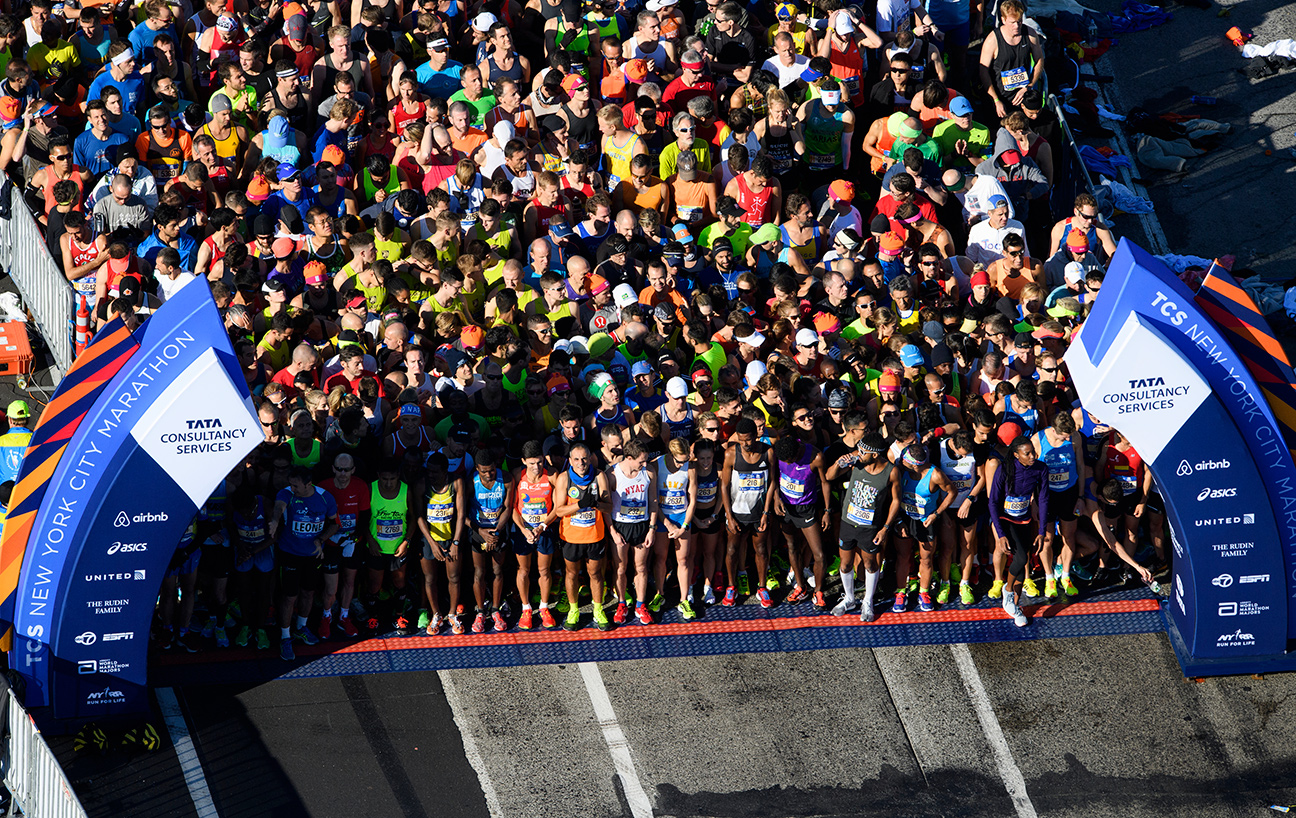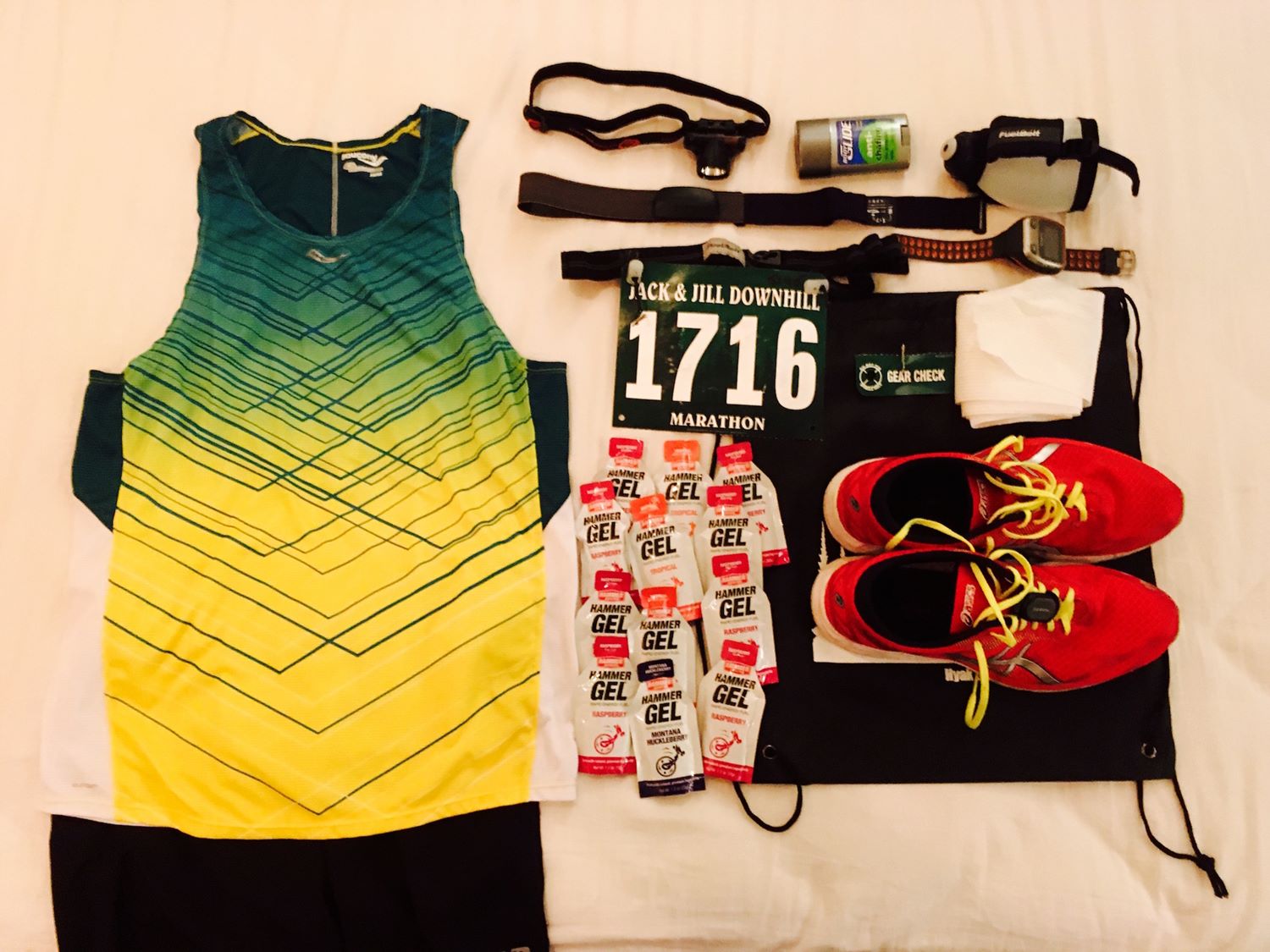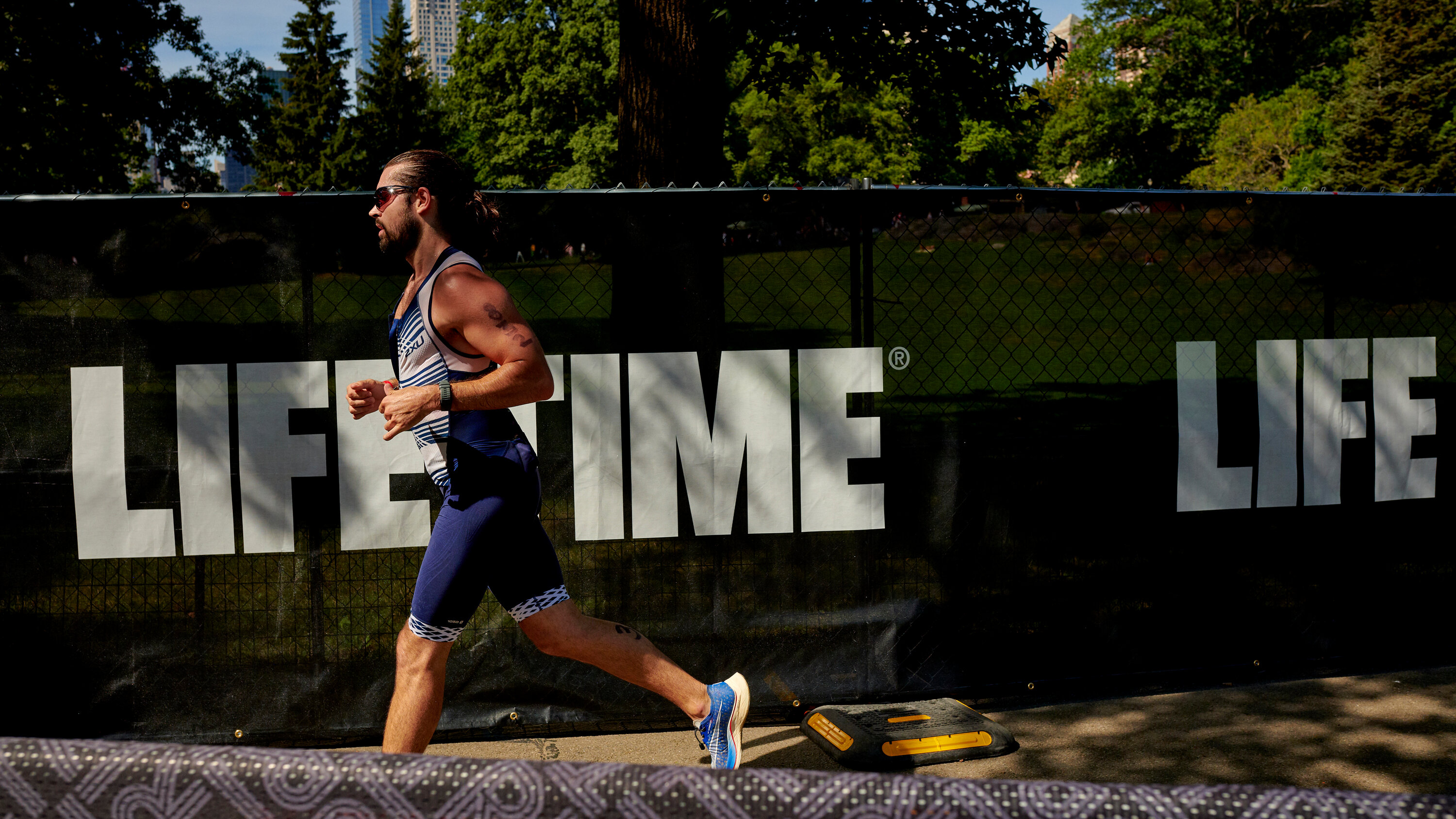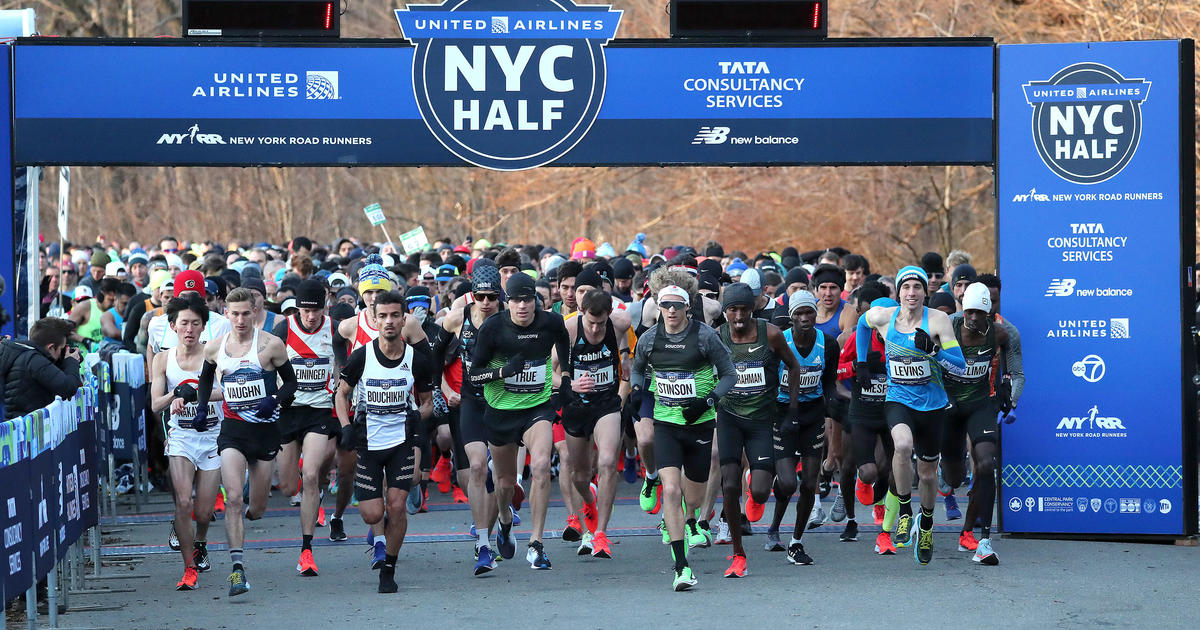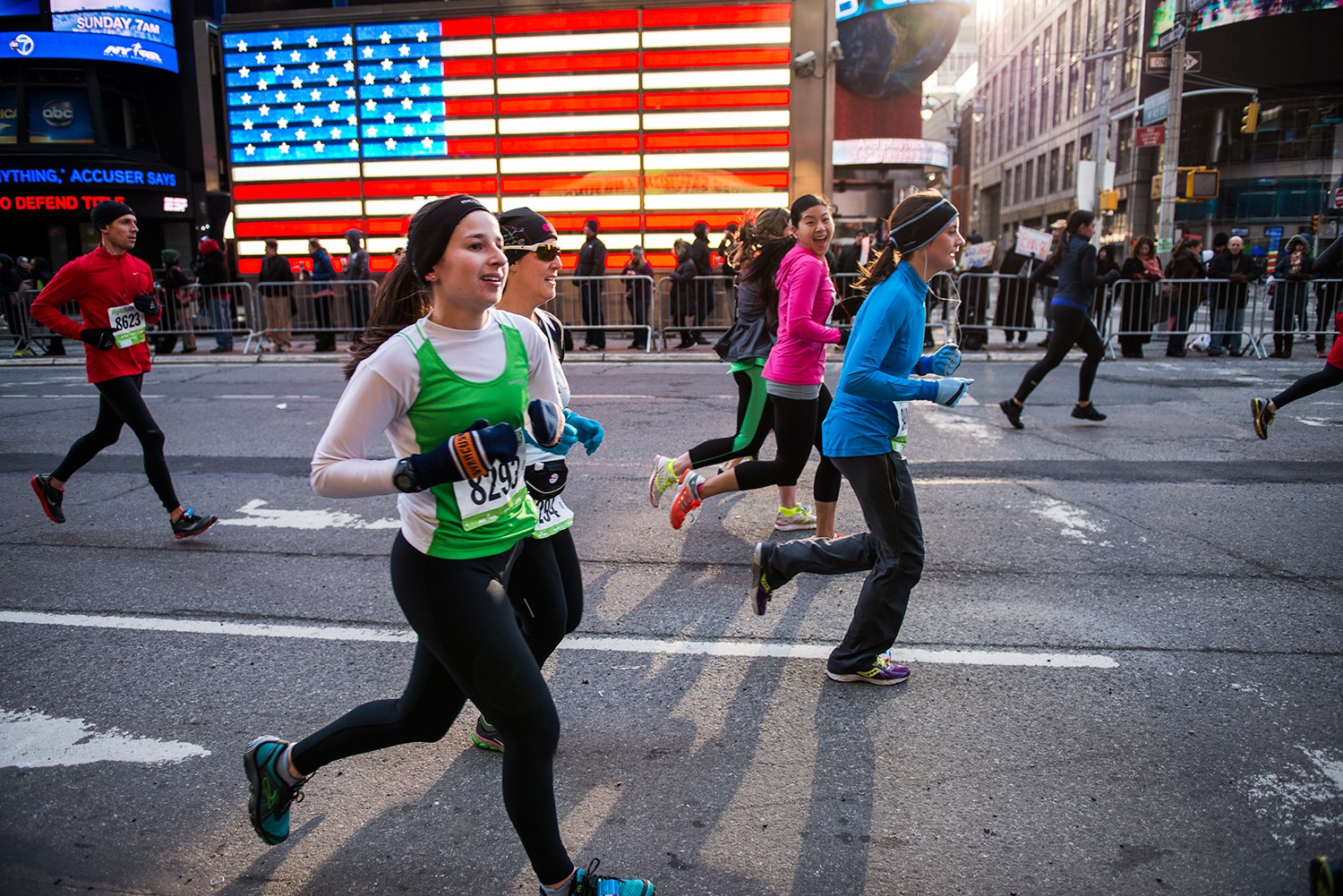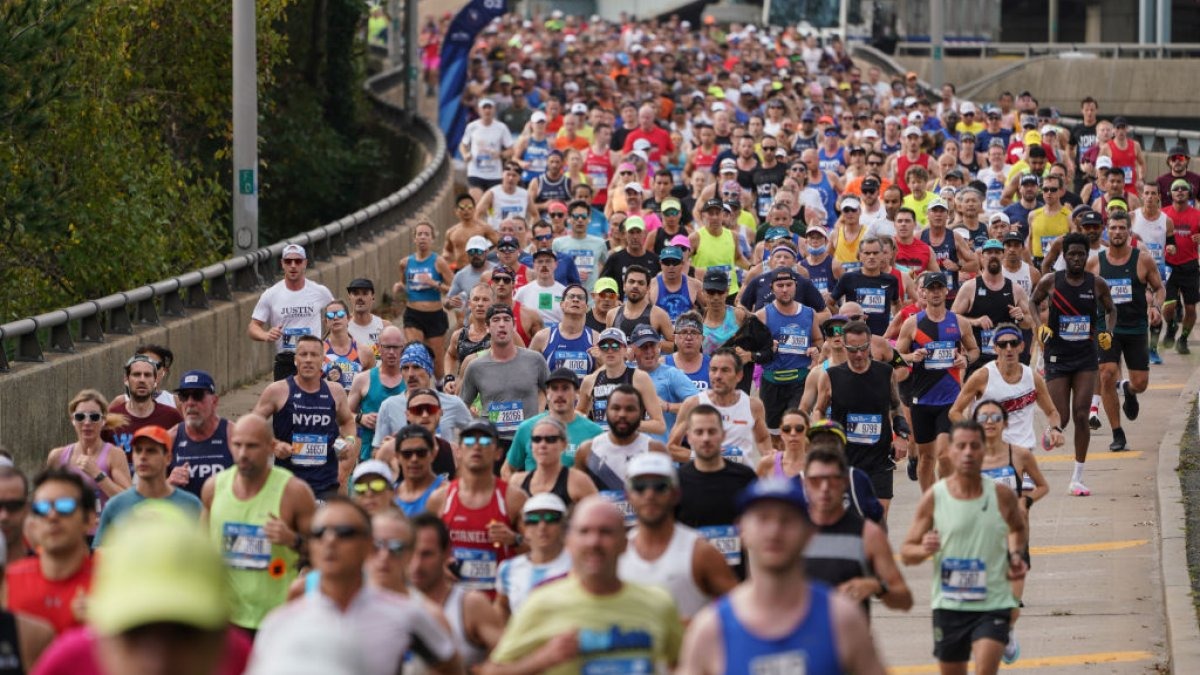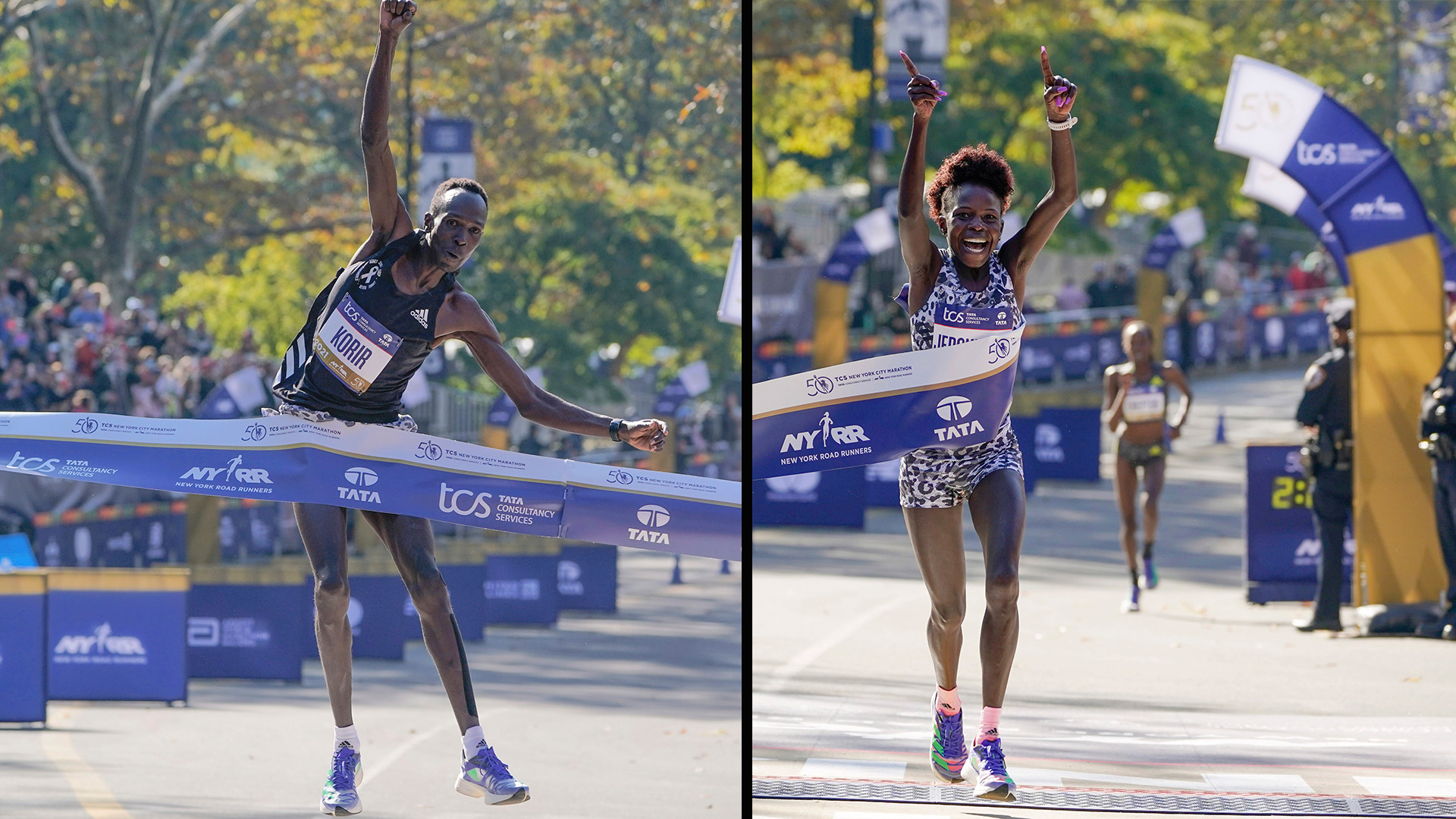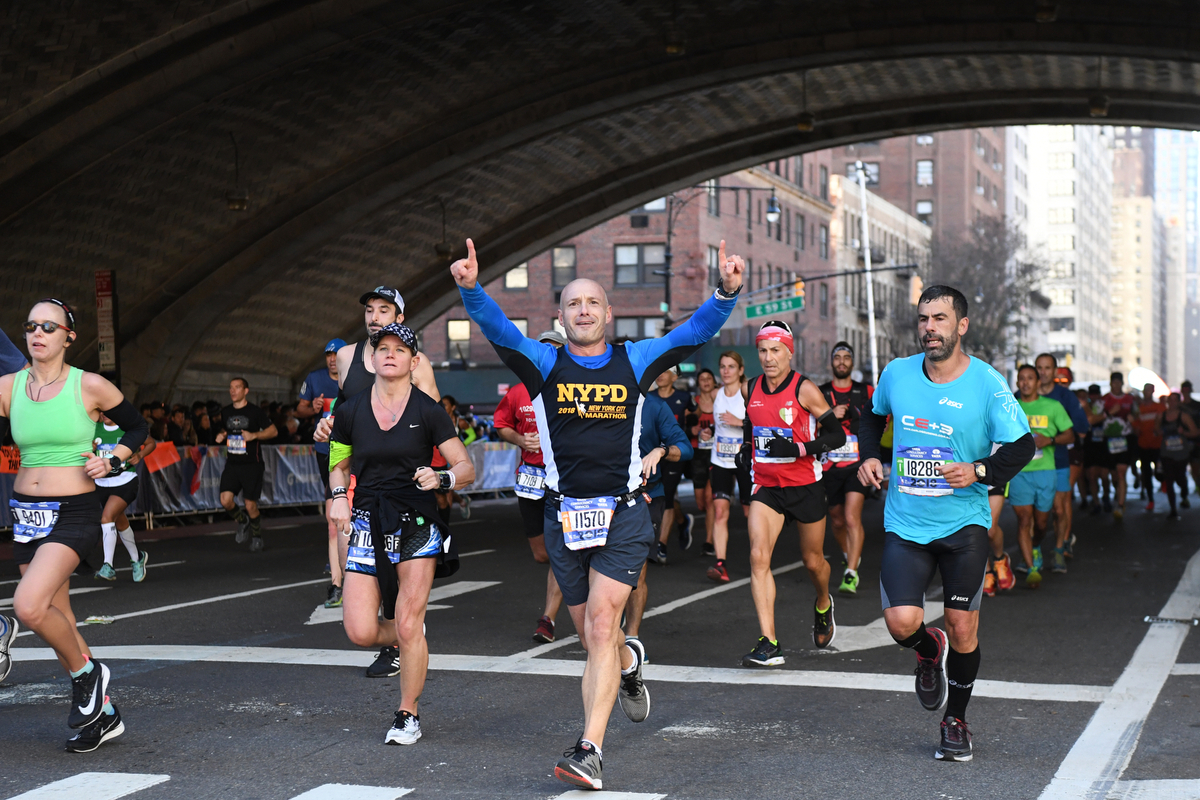

Featured
How To Train For The NYC Marathon
Modified: January 22, 2024
Get featured in the NYC Marathon! Learn how to train for the iconic race with our expert tips and advice. Start your journey towards greatness today.
Introduction
Are you ready to take on the ultimate test of endurance and determination? The New York City Marathon, also known as the NYC Marathon, is one of the most prestigious and iconic long-distance races in the world. Spanning a challenging 26.2-mile route through the streets of the Big Apple, this marathon attracts elite athletes and passionate runners from across the globe.
Training for the NYC Marathon requires commitment, discipline, and careful planning. Whether you’re a seasoned runner or embarking on your very first marathon, this article will guide you through the essential steps to prepare for the race of a lifetime.
The NYC Marathon is not just about crossing the finish line; it’s about the journey. The months leading up to the race are filled with intense training, mental resilience, and physical preparation. This article will take you through each step of the process, from setting a goal to crossing the finish line with pride and accomplishment.
By following the training strategies outlined in this article, you will build the endurance, strength, and confidence necessary to conquer the NYC Marathon. You will learn about different types of runs to incorporate into your training, methods for building endurance, the importance of strength training and cross-training, injury prevention techniques, proper nutrition and hydration, and tips for mental preparation.
Embarking on the NYC Marathon journey is not to be taken lightly. It requires months of dedicated training, hard work, and sacrifice. However, with the right mindset and approach, you can turn this challenge into a transformative experience that pushes your limits and helps you discover what you’re truly capable of.
So, lace up your running shoes, put on your favorite running gear, and let’s dive into the world of training for the NYC Marathon. Your journey to the finish line begins now!
Setting a Goal
Before embarking on any training program, it’s crucial to set a goal for your NYC Marathon journey. Setting a clear and specific goal will not only provide you with motivation and direction, but it will also help guide your training decisions along the way.
Your goal for the NYC Marathon may be different from someone else’s, and that’s perfectly okay. It could be to finish the race within a certain time, to complete the marathon injury-free, or simply to enjoy the experience and soak in the vibrant atmosphere of the event.
When determining your goal, consider your current fitness level, running experience, and any time constraints or personal commitments you may have. Be realistic yet ambitious, allowing yourself room for growth and improvement.
Once you’ve set your overall goal, it can be helpful to break it down into smaller milestones. For example, setting intermediate goals such as completing a certain distance in a specific time or running at a consistent pace can keep you motivated and excited throughout your training.
It’s important to note that while finishing the NYC Marathon is a remarkable achievement in itself, the focus should not solely be on the end result. Embrace the entire process of training, enjoy the journey, and celebrate the small victories along the way.
Remember, your goal is personal to you. Embrace your own journey and don’t compare yourself to others. Each runner’s path is unique, and what matters most is that you’re challenging yourself and pushing your limits.
Setting a goal for the NYC Marathon is just the first step in your training journey. Now that you have a clear direction in mind, it’s time to create a training schedule that will help you achieve your goals and conquer the race.
Creating a Training Schedule
One of the most essential aspects of preparing for the NYC Marathon is creating a training schedule that suits your needs and goals. A well-structured and balanced training plan will help you build the necessary endurance, improve your running efficiency, and minimize the risk of injury.
When creating your training schedule, consider your current fitness level, running experience, and available time for training. It’s important to find a balance between pushing yourself and allowing for adequate rest and recovery.
Begin by assessing the amount of time you can dedicate to training each week. Will you be able to run five days a week, or will you need to stick to a three or four-day schedule? Be realistic and choose a frequency that aligns with your lifestyle and commitments.
Next, determine the weekly mileage you aim to achieve during your training. Gradually increase your mileage over time, allowing your body to adapt to the increased demands. It’s essential to listen to your body and avoid overtraining, as doing too much too soon can lead to burnout or injury.
Integrate a variety of runs into your schedule. Include long runs to build endurance, tempo runs to improve your speed, and recovery runs to allow your body to recover and adapt. Additionally, consider incorporating interval training and hill repeats to enhance your cardiovascular fitness and running strength.
Remember to include rest days in your training schedule. Rest days are as crucial as the training days, as they allow your body to recover and rebuild. Use these days to focus on active recovery activities such as stretching, foam rolling, or engaging in low-impact exercises like swimming or cycling.
Flexibility is key when creating your training schedule. Life can throw unexpected challenges your way, and it’s important to adapt and adjust your plan accordingly. Be open to modifications and don’t be too hard on yourself if you need to make changes along the way.
Keep track of your progress and monitor how your body responds to the training. If you feel excessive fatigue or pain, listen to your body and make the necessary adjustments to prevent injuries. Remember, it’s better to take a day off than to push through and risk long-term setbacks.
Creating a well-crafted training schedule will not only help you physically prepare for the NYC Marathon, but it will also provide you with a sense of structure and motivation. Stick to your schedule, stay consistent, and trust in the process as you work towards achieving your goals.
Incorporating Different Types of Runs
Training for the NYC Marathon involves more than just logging miles. To optimize your performance and improve your overall running ability, it’s essential to incorporate different types of runs into your training regimen. Each type of run targets specific aspects of your running fitness, helping you build endurance, speed, and strength.
1. Long Runs: Long runs are the cornerstone of marathon training. These runs are typically done at an easy, conversational pace and gradually increase in distance over time. Long runs simulate the marathon distance and help build the necessary endurance for race day. Aim to complete these runs at a comfortable pace and gradually increase the miles each week.
2. Tempo Runs: Tempo runs are performed at a “comfortably hard” pace, which is slightly faster than your marathon pace. These runs help improve your lactate threshold, teaching your body to clear lactic acid more efficiently. Begin with shorter tempo runs and gradually increase the duration over the course of your training.
3. Interval Training: Interval training involves alternating bursts of high-intensity running with periods of active recovery. These workouts help improve speed, running economy, and cardiovascular fitness. Include intervals of varying distances, such as 400 meters, 800 meters, or mile repeats, and adjust the intensity and recovery periods based on your fitness level.
4. Hill Repeats: Incorporating hill repeats into your training helps build leg strength and enhances your running form. Find a challenging hill and sprint up it, focusing on maintaining good running technique. Jog or walk down the hill to recover, and repeat the process several times. Hill repeats are a great way to improve both your physical and mental strength.
5. Recovery Runs: Recovery runs are shorter, slow-paced runs done on the day after a more intense workout. These runs promote blood flow, aid in recovery, and prevent muscle soreness. Keep the pace relaxed and use this time to listen to your body and enjoy an easy run.
6. Cross-Training: Incorporating cross-training activities such as swimming, cycling, or strength training into your routine can complement your running efforts. These activities help prevent overuse injuries, strengthen your muscles, and provide a break from the impact of running. Aim for one or two cross-training sessions per week.
By incorporating a combination of these different types of runs into your training schedule, you will develop a well-rounded running fitness and be better prepared for the demands of the NYC Marathon. Remember to listen to your body, gradually increase the intensity and duration of each type of run, and vary your training to keep your workouts challenging and engaging.
Building Endurance
Building endurance is a crucial aspect of training for the NYC Marathon. It’s what will enable you to maintain a steady pace throughout the 26.2 miles and cross that finish line with confidence. To improve your endurance, it’s essential to challenge your body and gradually increase your mileage over time.
1. Gradual Mileage Increase: Start by gradually increasing your weekly mileage as you progress through your training. Avoid making drastic jumps in mileage, as this can increase the risk of overuse injuries. Aim to increase your weekly mileage by no more than 10% each week. This gradual progression allows your body to adapt and gradually build endurance.
2. Long Runs: Long runs are the key to building endurance for the marathon. These runs simulate the duration and demands of the race and gradually increase in distance over time. Start with a comfortable long run distance and gradually add one mile or more each week. Aim to complete your long runs at a slower pace than your goal race pace, allowing your body to adapt to running for a longer duration.
3. Time on Your Feet: In addition to distance, it can be beneficial to focus on time spent running during your long runs. Rather than solely focusing on the mileage, aim to increase the duration of your long runs. This will help train your body to endure the physical and mental challenges of the marathon distance.
4. Back-to-Back Runs: Incorporate back-to-back runs into your training schedule. This involves running a long distance one day, followed by a shorter run the next day. These runs help simulate the fatigue you may experience during the later stages of the marathon. They also teach your body to recover and perform well on tired legs.
5. Negative Splits: During your long runs, practice negative splits. This means gradually increasing your pace as the run progresses. Starting slower and finishing stronger helps build mental toughness and strengthens your endurance. It also mimics the strategy of conserving energy and picking up the pace in the later stages of the marathon.
6. Time Trials and Progression Runs: Periodically incorporate time trials or progression runs into your training. Time trials are shorter distance runs where you aim to run at a challenging, but sustainable pace. Progression runs involve gradually increasing your pace throughout the run. Both of these workouts help improve your endurance and prepare you for the effort required during the marathon.
Building endurance is a gradual process that requires consistency and patience. It’s important to listen to your body, allow for adequate rest and recovery, and continuously challenge yourself to push past your comfort zone. The key is to stay committed to your training and trust in the process. As you build your endurance, you’ll feel stronger and more prepared to take on the NYC Marathon.
Strength Training and Cross-Training
While running is the cornerstone of marathon training, incorporating strength training and cross-training into your routine is essential for overall performance and injury prevention. These activities help build strength, improve muscular balance, and provide a break from the repetitive impact of running.
1. Strength Training: Include strength training exercises that target the major muscle groups used in running, such as the legs, core, and upper body. Focus on compound exercises like squats, lunges, deadlifts, and push-ups. Incorporate both resistance training using weights or resistance bands, and bodyweight exercises. Strength training helps improve running efficiency, endurance, and reduces the risk of injuries by building a strong foundation.
2. Core Exercises: A strong core is essential for maintaining proper running form and stability. Incorporate exercises that target the abdominal muscles, lower back, and hips. Planks, Russian twists, and bicycle crunches are just a few examples of core exercises that can benefit your running performance.
3. Cross-Training: Engaging in cross-training activities helps improve cardiovascular fitness, builds strength in different muscle groups, and provides a mental break from running. Activities such as swimming, cycling, or using an elliptical machine can help boost your overall fitness without impacting your joints as much as running. Aim for one or two cross-training sessions per week to complement your running routine.
4. Flexibility and Mobility: Incorporate flexibility and mobility exercises into your routine to improve your range of motion and reduce the risk of muscle imbalances. Stretching exercises such as calf stretches, quad stretches, and hip flexor stretches can help enhance your running stride. Additionally, consider incorporating mobility exercises like leg swings, lunges with a twist, and foam rolling to improve joint mobility and muscle flexibility.
5. Active Recovery: Use cross-training activities as a form of active recovery on your rest days or lighter training days. Engaging in low-impact activities such as swimming or cycling helps promote blood flow, aids in recovery, and reduces post-run muscle soreness. It’s important to listen to your body and adjust the intensity and duration of these activities based on your training phase and fatigue level.
Remember, incorporating strength training and cross-training into your marathon training schedule should complement your running and not replace it. It’s important to strike a balance so that these activities enhance your running performance without leading to excessive fatigue or overtraining. Consult with a certified trainer or coach to develop a personalized strength training program that aligns with your running goals and current fitness level.
By including strength training and cross-training into your routine, you’ll build overall body strength, improve muscular endurance, and reduce the risk of injury. These activities will not only enhance your running performance but also contribute to your overall health and well-being.
Injury Prevention and Stretching
When training for the NYC Marathon, taking measures to prevent injuries is crucial to ensure a successful and enjoyable experience. Incorporating proper warm-up, cooling down, and stretching routines into your training regimen can help reduce the risk of common running injuries and keep you on track towards your marathon goals.
1. Warm-Up: Before every run, it’s important to warm up your muscles and prepare your body for the demands of running. Start with 5-10 minutes of light aerobic activity, such as brisk walking or a slow jog. This increases blood flow to your muscles and raises your body temperature, which helps prevent injury.
2. Cooling Down: After completing your run or workout, don’t forget to cool down. Gradually reduce your pace to a brisk walk or slow jog for 5-10 minutes. This allows your heart rate to gradually return to normal and gradually reduces muscle soreness and stiffness.
3. Stretching: Incorporating stretching exercises into your routine can help increase flexibility, improve muscle elasticity, and reduce muscle tension and tightness. Focus on stretching major muscle groups used in running, such as the calves, quadriceps, hamstrings, and hip flexors. Hold each stretch for 20-30 seconds and perform them after your warm-up or post-run cooldown.
4. Foam Rolling: Using a foam roller is an effective way to release muscle tension and tightness. Roll the foam roller over your muscles, focusing on areas that feel tight or tender. This self-myofascial release technique can help improve blood circulation, reduce muscle knots, and enhance your overall mobility and flexibility.
5. Listen to Your Body: Pay attention to any signs of pain or discomfort during your training. It’s important to differentiate between normal muscle soreness and potential injury. If you experience persistent pain, swelling, or any unusual sensations, seek professional advice to address the issue promptly. Ignoring or pushing through pain can exacerbate injuries and hinder your progress.
6. Cross-Train and Rest: Include regular rest days in your training schedule to allow your body to recover and repair. Overtraining can increase the risk of injuries and lead to burnout. Additionally, incorporating low-impact cross-training activities like swimming, cycling, or yoga can help maintain your cardiovascular fitness without placing excessive stress on your joints and muscles.
Remember, prevention is key when it comes to injuries. By incorporating warm-up and cool-down routines, implementing a stretching regimen, and being mindful of your body’s signals, you can minimize the risk of injuries and stay on track to conquer the NYC Marathon.
Nutrition and Hydration
Proper nutrition and hydration are vital components of your training for the NYC Marathon. Fueling your body with the right nutrients and maintaining optimal hydration levels will not only support your performance, but also aid in recovery and reduce the risk of fatigue and injury. Here are some key considerations for your marathon nutrition and hydration strategy:
1. Balanced Diet: Maintain a balanced diet that includes a variety of nutrient-dense foods, including fruits, vegetables, whole grains, lean proteins, and healthy fats. These foods provide essential vitamins, minerals, and antioxidants that support overall health and optimize your training.
2. Carbohydrates: Carbohydrates are the primary energy source for endurance activities like marathon running. Include complex carbohydrates, such as whole grains, legumes, and vegetables, in your meals and snacks to provide sustained energy for your training runs and recover your glycogen stores.
3. Protein: Protein is crucial for muscle repair and growth. Include lean sources of protein, such as poultry, fish, eggs, beans, and tofu, in your meals to aid in recovery and promote muscle health. Aim for a balanced distribution of protein throughout the day.
4. Hydration: Proper hydration is essential for optimal performance. Hydrate before, during, and after your runs. Drink water to quench thirst and consume electrolyte-rich beverages to replenish sodium and other important minerals lost through sweat. Monitor your urine color to ensure you’re adequately hydrated.
5. Pre-Run Fuel: Before your long runs or workouts, consume a balanced meal or snack that includes carbohydrates for energy and a small amount of protein to support muscle repair. Experiment with different pre-run meals to determine what works best for you and helps avoid gastrointestinal discomfort during your runs.
6. During-Run Fuel: During long runs or races, fuel your body with easily digestible carbohydrates to maintain energy levels. Experiment with energy gels, sports drinks, or natural sources like dates or bananas to find what works best for you. Aim to consume 30-60 grams of carbohydrates per hour of running.
7. Post-Run Recovery: Within 30 minutes of completing your run, consume a post-workout snack or meal that includes both carbohydrates and protein to replenish energy stores and aid in muscle recovery. This can be a combination of a banana with nut butter, a protein smoothie, or Greek yogurt with fruit.
8. Nutrient Timing: Distribute your meals and snacks throughout the day to provide a steady supply of nutrients to support your training efforts. Aim for regular meals and snacks every 3-4 hours to maintain energy levels and facilitate recovery.
9. Individualized Approach: Every runner is different, so it’s important to find a nutrition and hydration strategy that works best for you. Experiment with different foods, timing, and quantities during your training to determine what fuels your body optimally.
Remember, proper nutrition and hydration are an ongoing part of your training, not just on race day. Consistency in maintaining a balanced diet and proper hydration will enhance your overall performance and keep you fueled for success on your journey to conquer the NYC Marathon.
Mental Preparation
Running a marathon like the NYC Marathon requires not only physical strength but also mental resilience. The mental aspect of training and racing is just as important as the physical preparation. Here are some strategies to help you develop mental toughness and prepare your mind for the challenges ahead:
1. Goal Visualization: Visualize yourself crossing the finish line, achieving your goal time, and feeling a sense of accomplishment. Create a clear mental image of what success looks and feels like. Visualizing your goals can boost confidence, motivation, and commitment.
2. Positive Self-Talk: Develop a positive internal dialogue. Replace self-doubt and negative thoughts with positive affirmations. Remind yourself of your strengths, previous accomplishments, and the progress you’ve made throughout your training. Encourage yourself with positive self-talk during challenging moments in races or training runs.
3. Mantras and Affirmations: Create personal mantras or affirmations to repeat during your training runs and on race day. These short, positive phrases can keep you focused, motivated, and calm. Choose phrases that resonate with you, such as “I am strong,” “I can do this,” or “One step at a time.”
4. Mental Rehearsal: Practice mentally rehearsing different scenarios you may encounter during the marathon. Imagine running through difficult moments, overcoming challenges, and staying focused and determined. This mental preparation will help you respond more effectively and positively during the race.
5. Mindfulness and Meditation: Incorporate mindfulness and meditation practices into your daily routine. These practices can help calm the mind, reduce stress, increase focus, and enhance your ability to stay present during the race. Experiment with different techniques, such as deep breathing exercises or guided meditation apps, to find what works best for you.
6. Break the Race into Manageable Segments: Instead of thinking about the entire marathon distance, break it down into smaller, more manageable segments. Focus on running one mile at a time or reaching specific landmarks along the course. This approach can help prevent feelings of overwhelm and keep you mentally engaged and motivated throughout the race.
7. Embrace Discomfort: Acknowledge that running a marathon is challenging, and there will be moments of discomfort. Embrace the discomfort as an opportunity for growth and self-discovery. Mentally prepare yourself for the tough moments and visualize pushing through and overcoming them. Remember, the most rewarding accomplishments often come from pushing through challenges.
8. Staying in the Present Moment: During training runs and the race, focus on the present moment instead of getting caught up in thoughts about the past or future. Pay attention to your breathing, your surroundings, and the rhythm of your stride. Cultivating mindfulness during your runs can help keep you focused and centered.
Remember, mental preparation is an ongoing practice. Incorporate these strategies into your training routine and daily life to strengthen your mental resilience. Believe in yourself, stay positive, and embrace the mental challenges. With a strong mindset, you’ll be better equipped to conquer the NYC Marathon and achieve your goals.
Race Day Strategies
Race day is the culmination of months of training and preparation for the NYC Marathon. To ensure a successful and enjoyable race, it’s important to have a strategic plan in place. Here are some race day strategies to help you perform at your best:
1. Stick to Your Routine: On race day, follow the same routine you’ve practiced during your long training runs. Eat a familiar pre-race meal, wear comfortable clothing, and use the gear and equipment you’ve trained with. Familiarity breeds confidence and helps reduce anxiety on race day.
2. Start Slow: Avoid the trap of starting the race too fast. A common mistake is getting caught up in the excitement and adrenaline at the beginning. Starting at a sustainable pace allows you to conserve energy for the later miles and helps prevent burnout.
3. Break the Race into Sections: Mentally divide the race into manageable sections. Focus on reaching each mile marker or landmark instead of thinking about the entire distance. This approach allows you to stay present and maintain a positive mindset throughout the race.
4. Utilize Aid Stations: Take advantage of the aid stations along the course. Stay hydrated by drinking water or sports drinks offered. Some aid stations may also provide energy gels or other fueling options. Practice grabbing and drinking from cups during your training runs to make it easier on race day.
5. Listen to Your Body: Pay attention to any signs of fatigue or discomfort during the race. Be mindful of your body’s cues and pace yourself accordingly. If necessary, take short walking breaks or slow down your pace temporarily to recover and prevent burnout.
6. Stay Positive: Maintain a positive mindset throughout the race. Use positive self-talk, repeat your mantras or affirmations, and focus on the excitement and joy of the experience. Embrace the cheers from spectators and acknowledge your accomplishments along the way.
7. Make Adjustments: Be flexible and willing to make adjustments to your race day strategy if needed. If you’re experiencing unexpected challenges, such as adverse weather conditions or physical discomfort, have alternative plans in mind. Adapt your goals and embrace the circumstances as part of the race day experience.
8. Enjoy the Experience: Remember to soak in the atmosphere and enjoy the experience of running the NYC Marathon. Appreciate the sights and sounds of the course, the support from the crowds, and the camaraderie with fellow runners. Cherish the moment and celebrate your journey.
9. Finish Strong: As you approach the final miles of the race, summon your mental and physical strength. Dig deep and tap into your reserves of determination. Visualize crossing the finish line strong and proud. Give it your all and finish the marathon with a sense of accomplishment.
Remember, race day is the culmination of your hard work and dedication. Trust in your training, stay focused, and enjoy every moment of the NYC Marathon. No matter the result, completing a marathon is an incredible achievement. Celebrate your accomplishment and savor the memories of this remarkable race.
Conclusion
Congratulations! You have now gained valuable insights into how to train for the NYC Marathon. From setting a goal to crossing the finish line, your journey requires determination, dedication, and the right strategies. By following the steps outlined in this article, you can confidently embark on your marathon training and conquer the iconic race.
Remember, your training journey is unique to you. Set realistic goals, create a customized training schedule, and be consistent in your efforts. Incorporate various types of runs, strength training, and cross-training activities to build endurance and prevent injuries. Pay attention to nutrition, hydration, and proper recovery practices to support your body’s needs.
Equally important is the mental aspect of marathon training. Prepare yourself mentally by visualizing success, adopting positive self-talk, and practicing mindfulness techniques. Stay focused, embrace challenges, and believe in your ability to overcome obstacles that may arise along the way.
As you approach race day, follow your routine, start conservatively, and break the race into manageable sections. Utilize aid stations, listen to your body, and maintain a positive mindset. Make any necessary adjustments and enjoy the incredible experience of running the NYC Marathon.
Remember, the NYC Marathon is not just about the race itself, but also the journey you undertake to get there. Embrace the process, cherish the small victories, and celebrate your progress. Every step you take, both in training and on race day, brings you closer to achieving your goals and realizing your full potential.
So, lace up your running shoes, trust in your training, and embark on this incredible marathon journey. The NYC Marathon awaits you, ready to test your limits and reward your hard work. Good luck, and may your training and race be filled with joy, accomplishment, and the satisfaction of crossing that finish line!
